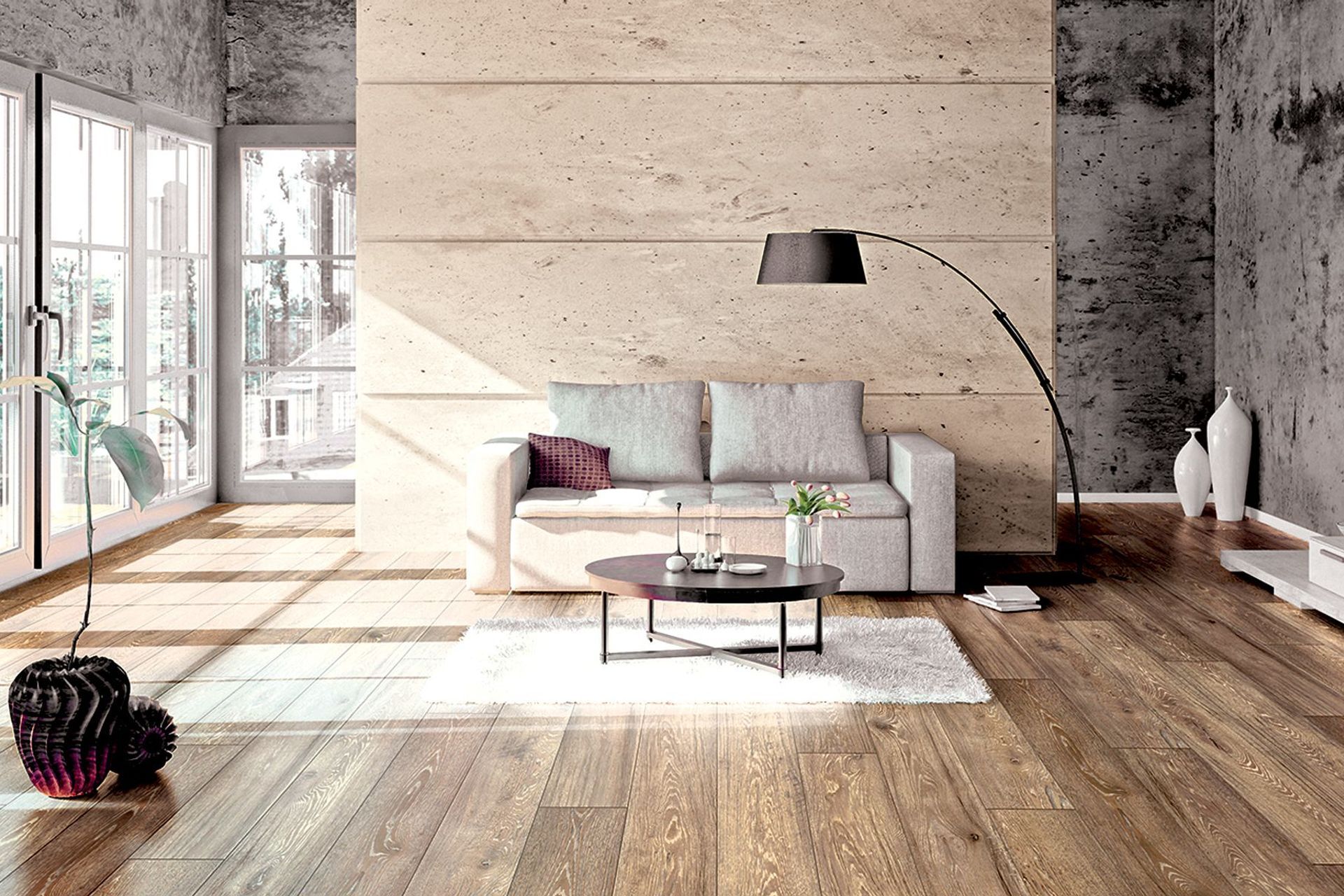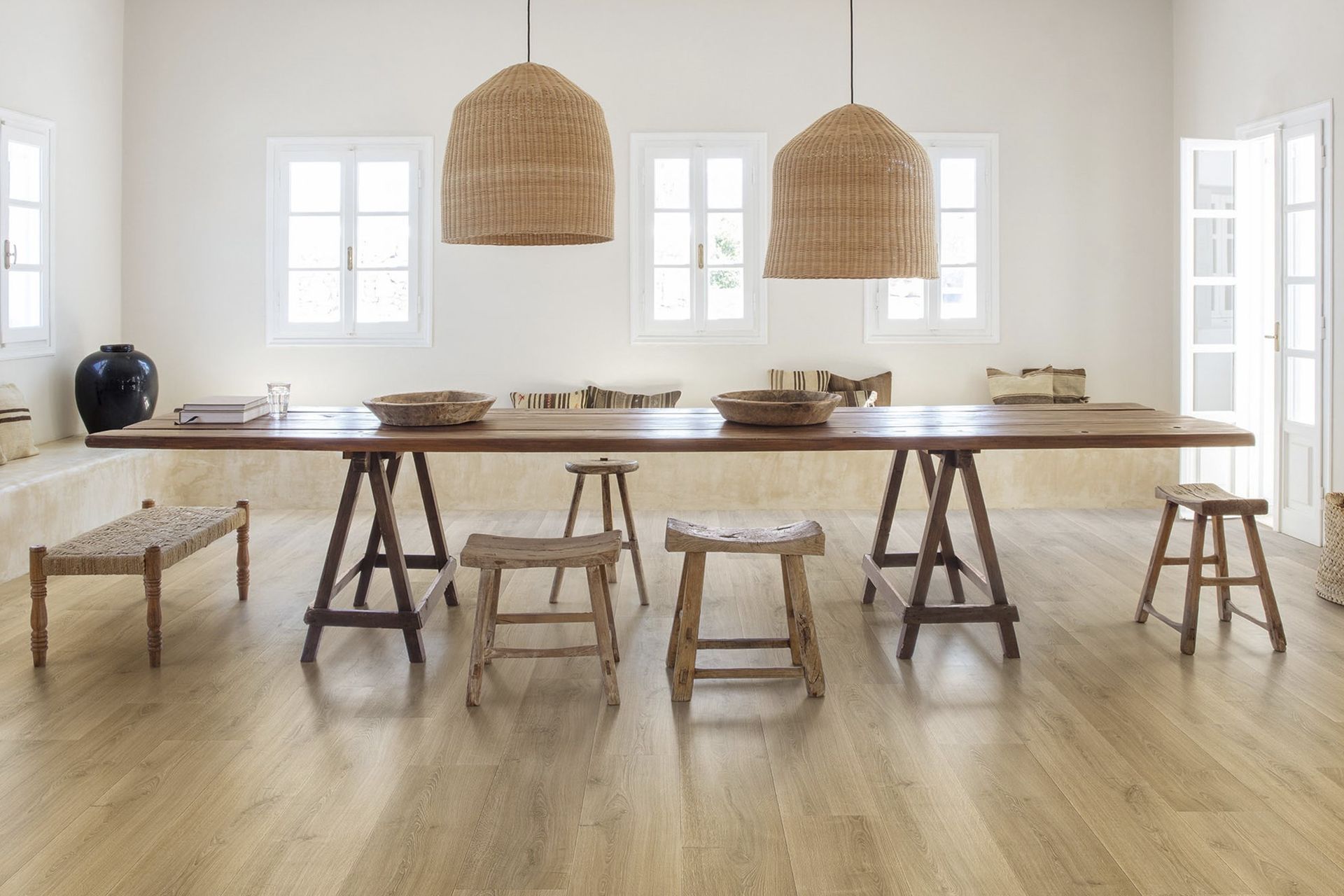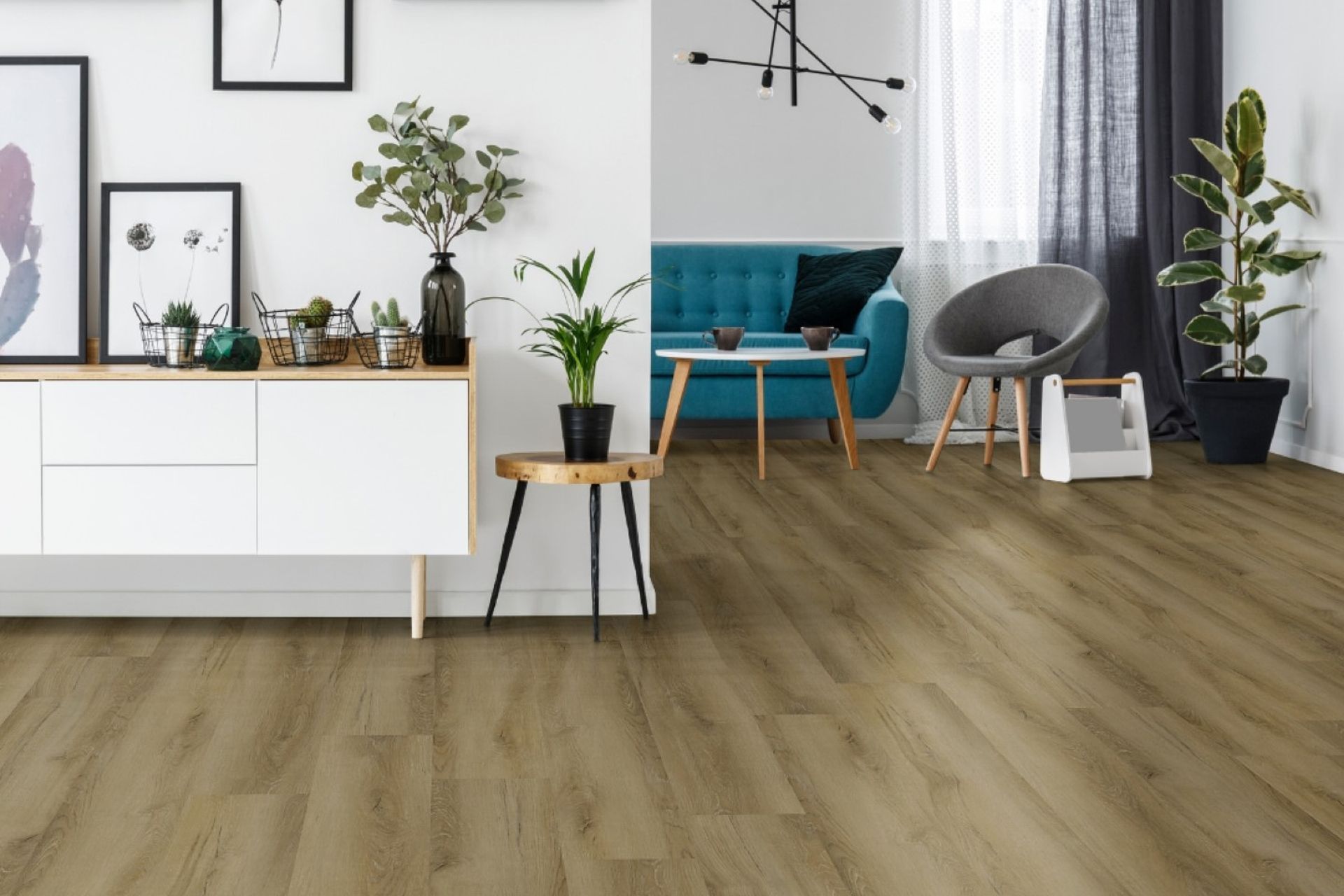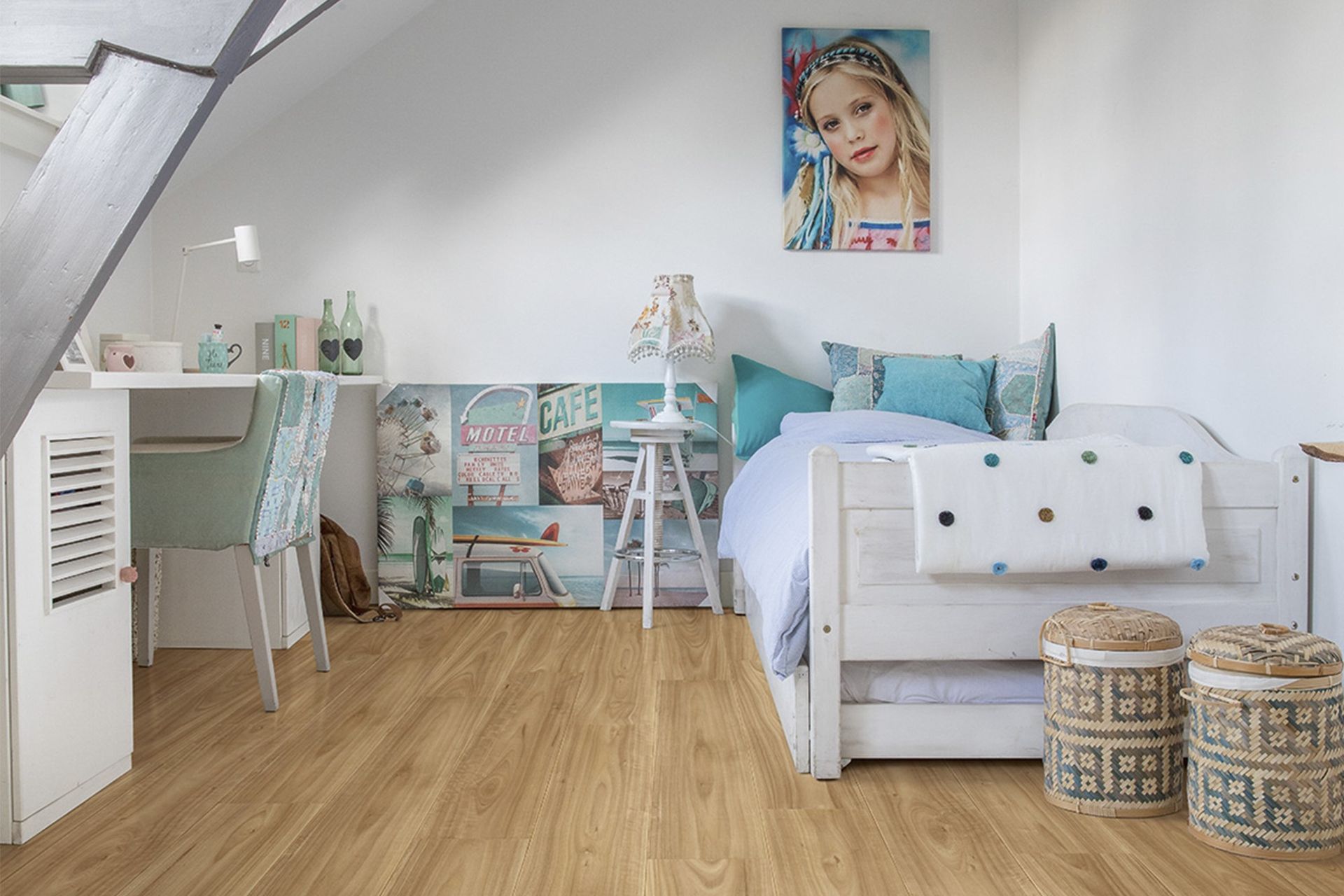Exploring the essentials and benefits of laminate flooring
Written by
18 March 2024
•
8 min read
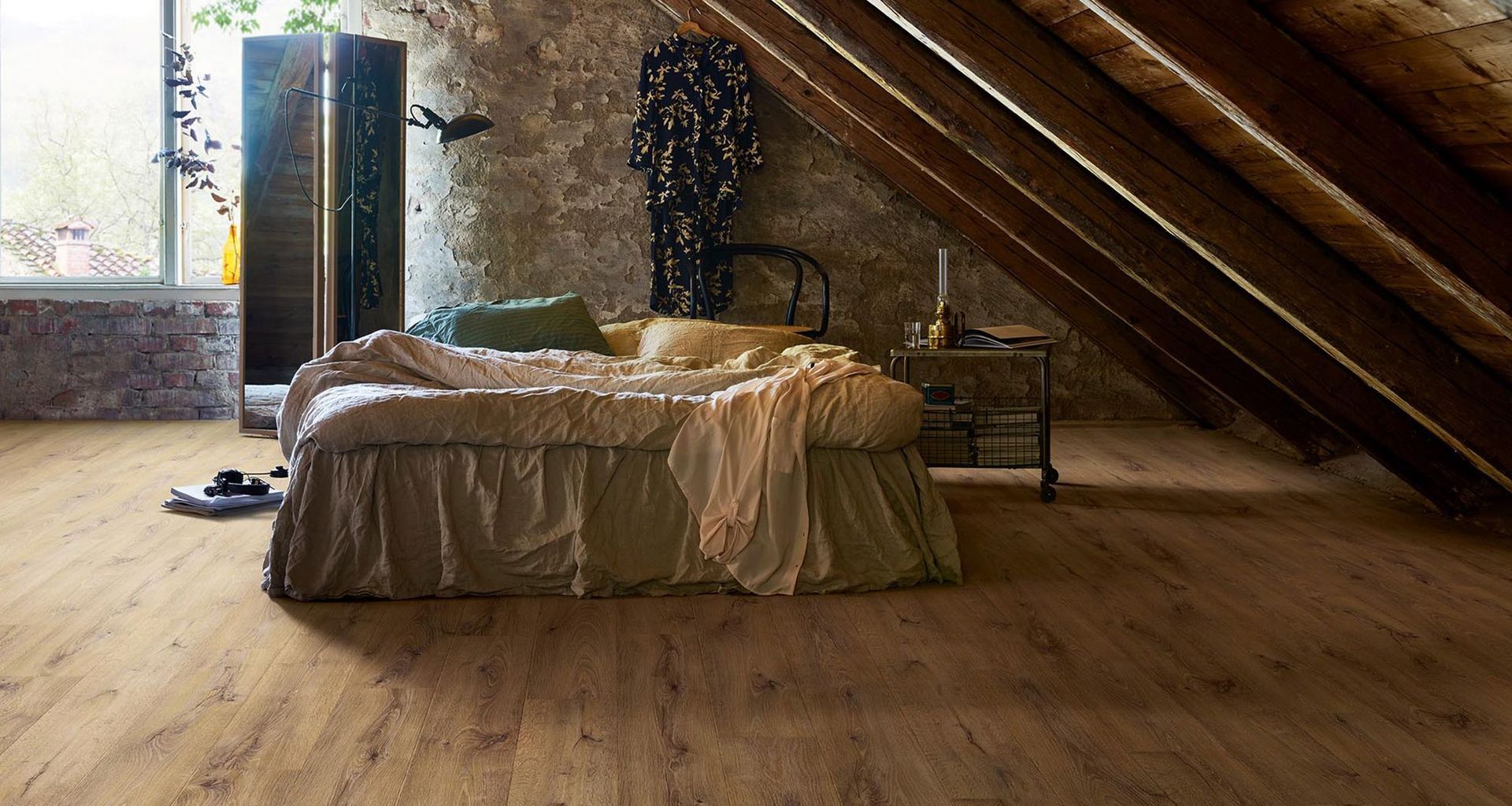
Laminate flooring has steadily emerged as a popular flooring solution in New Zealand for a variety of reasons but still carries a bit of a stigma compared to natural alternatives like solid wood flooring and tile. This perception is largely outdated as advancements and improved manufacturing have led to some impressive laminate flooring solutions that have given homeowners looking for a change, plenty of food for thought. By understanding the fundamentals, and exploring its benefits, the various types available, cost considerations, and more you'll see why it's an option well worth considering.
What is laminate flooring?
Laminate flooring is a synthetic flooring product that emulates the appearance of hardwood, stone, or other natural materials while offering impressive durability and a more cost-effective solution. It's composed of multiple layers – a moisture-resistant base layer, a high-density fibreboard (HDF) core, a photographic applique layer that mimics the look of real wood or stone, and a transparent protective layer on top to guard against wear and tear. This construction not only makes laminate flooring resilient to scratches, dents, and fading but also makes it easy to clean and maintain, making it an ideal choice for busy households. Its versatility in design and ease of installation, often with planks that can be clicked together without glue, allows for quick updates to any room.
Benefits of laminate flooring
In defining laminate flooring, you can already clearly see some of the benefits it has to offer. The case for it becomes even more compelling when you start to flesh these out in greater detail.
Durability
Laminate flooring stands up well against daily wear and tear, scratches, impacts, and even moisture, to some extent. It's an option that can maintain its appearance and functionality over time. Additionally, modern laminate floors come with UV protection to prevent fading from sunlight, ensuring their appearance remains vibrant for years. With advancements in technology, laminate flooring now offers water-resistant and even waterproof options, further enhancing its suitability for use in kitchens, bathrooms, and laundry areas, where spills and moisture are common.
Ease of installation
One of the most appealing traits of laminate flooring is its ease of installation, saving time for DIYers and professionals alike. Most modern products feature a click-lock system, where the laminate flooring planks effortlessly click into place without the need for glue, nails, or staples. This system not only simplifies the installation process but also allows for a clean and quick setup, often enabling a room to be transformed in just a day. The ability to create a floating floor with laminate planks over most existing floors in some situations, also eliminates the need for extensive subfloor preparation, reducing time and cost.
Low maintenance
Any flooring option that's a low-maintenance solution is immediately an attractive one and laminate floors deliver on that front. Ideal for busy households and commercial settings, its durable surface helps the flooring remain visually appealing with minimal effort. Regular cleaning is straightforward—a simple sweep or vacuum to remove dust and debris. An occasional follow-up with a damp mop and laminate-friendly cleaner will keep the floors looking their best. Unlike carpet, it doesn't harbour allergens, and unlike solid hardwood, doesn't require sanding, sealing or varnishing over its lifespan.
Variety of designs
The aesthetic variety of laminate flooring is vast, catering to every conceivable design preference and interior style. From the rich, warm hues of traditional woods like oak and walnut to the sleek, modern appeal of polished stone or concrete effects, it offers the ability to closely mimic a wide range of natural materials. Innovations in printing and texturing technologies mean that these floors can provide an incredibly realistic look and feel, including options for matte, textured and high-gloss finishes that add depth and character to any space.
Versatility
With all the qualities just covered, the versatility of laminate floors is clearly shown. Its comprehensive range of designs, its durability and resistance to wear and tear, its ease of installation and low maintenance requirements and its cost-effectiveness are all traits that allow it to be used in many different environments and situations.
Types of laminate flooring
There are many different types of laminate flooring to choose from in New Zealand, with variations across numerous traits and characteristics. Some of the main qualities which you'll look at to differentiate one from the other include:
Material aesthetic and colour
The most popular type of aesthetic that you'll generally find in laminate flooring is the look of natural wood flooring. Of these, the classic hardwood in oak is the most common but you'll also find options like walnut, merbau, blackbutt and spotted gum. Within these choices, you'll find colour variations including light grey, beige, brown, red, tan and white (to name a few).
Natural stone and tile looks are also popular with choices including slate, schist, limestone and bluestone among the top contenders. Concrete, while not a natural stone, is also an increasingly popular choice for a laminate floor.
Bevel variations
When looking closely at the specifications for laminate floors, you'll find different options with respect to bevel. Bevel, in this context, refers to the edge treatment of the flooring planks. Bevelled edges are designed to create a distinct line or groove between planks, giving the floor a more pronounced, segmented appearance that closely mimics the look of real hardwood flooring or grouting for stone and tile options.
The variations of bevel options are fairly subtle and have to do with the degree of bevel be it micro bevel (very slight) to deep bevel (fairly pronounced). The shape of the bevel can also vary including those which have a four-sided bevel to those that have a V groove. Some of the bevel descriptions can vary from brand to brand but generally speaking, they all relate to the depth and shape on the edge of the laminate flooring plank.
Finishes
The type of finish or degree of gloss is another quality that you'll have to think about when assessing your options. These will range from matte to high gloss which most are familiar with, as well as more niche finishes like Embossed in Register (EIR) where the texture of the laminate flooring matches that of the grain being mimicked, and the oiled finish look where the laminate floor has the appearance that its been treated with an oil.
Cost of laminate flooring in New Zealand
The price of laminate flooring in New Zealand can vary widely based on factors such as quality, brand, design complexity, and additional features like water resistance, premium finishes, textures, enhanced durability and so on. However, you will generally find that the price ranges generally fall between the following.
Entry-level laminate floors: $30 - $50 per square metre.
Mid-range laminate floors: $50 - $80 per square metre.
High-end laminate floors: $90 - $150 per square metre.
It's important to note that these prices are for the laminate flooring material only and do not include additional costs such as installation, trims, and other supplies that may be necessary for a complete flooring project. The only exception to this is usually the underlay is sometimes included in the price but this needs to be checked for each product. DIY installation can help save on costs, but professional laminate installation, recommended for achieving the best results, especially for complex areas, will add to the expense. For this reason, it's best to get quotes from a few specialists in advance so you know what to expect.
Other things to consider when choosing laminate flooring
There are a few other things to consider before making your final choice of laminate flooring. The first is the AC (Abrasion Class) rating, which indicates the floor's ability to withstand foot traffic, scratches, and wear. They go from AC1 (moderate domestic) to AC5 (heavy commercial) and are a good indicator of durability. The level of moisture resistance is important too, especially if it's for a room prone to dampness like the bathroom or laundry where you'll want to prioritise water-resistant and waterproof features. The installation method is a good thing to confirm especially if you will be attempting the job yourself as well as options for underlay if the product doesn't already come with it pre-attached. Finally, you may want to take into account the environmental credentials and health impact (like VOC emissions), factors that are becoming increasingly important. The best laminate floors made with modern manufacturing methods and technology will have been developed with these issues in mind.
Laminate flooring makes a compelling case for many
As you can see, laminate flooring is one of the best floor coverings to consider for a variety of situations, whether it's the family home, an office or an industrial setting. With the essentials covered, you're now in a great position to shortlist a number of options that will deliver everything you need from a floor and more for years to come.
Related article: Choosing the right carpet for your home — A step-by-step guide
